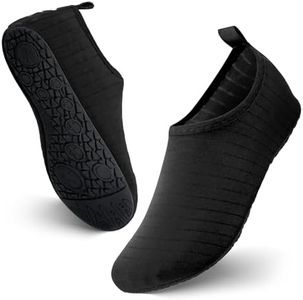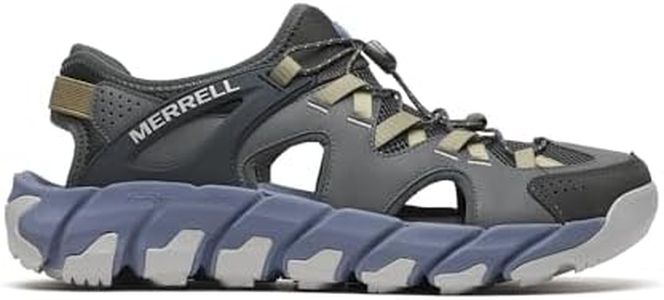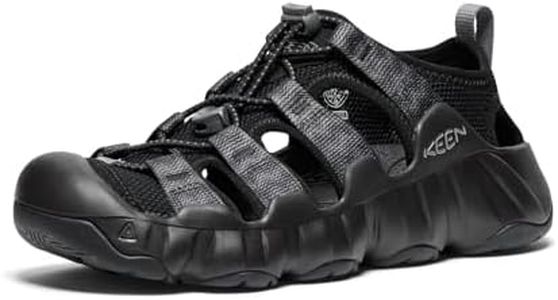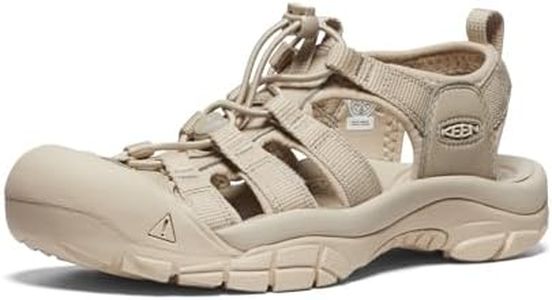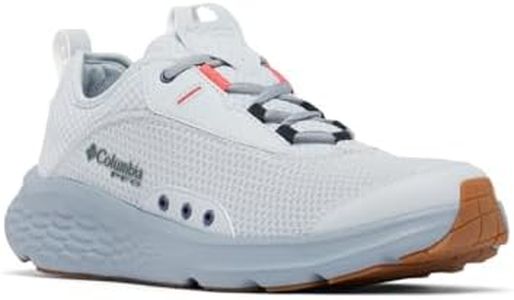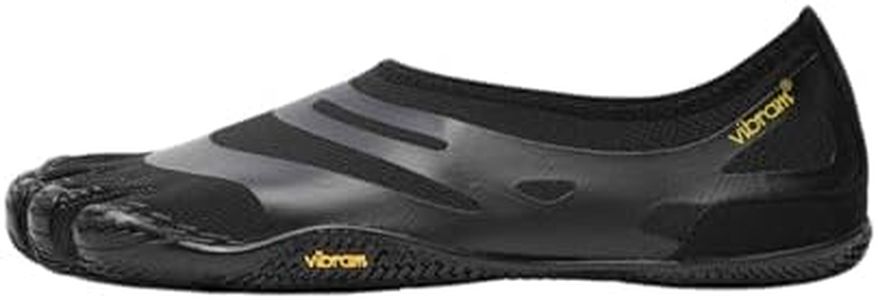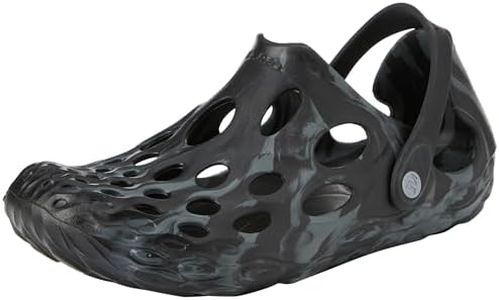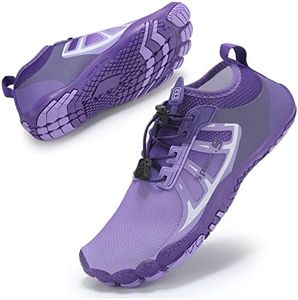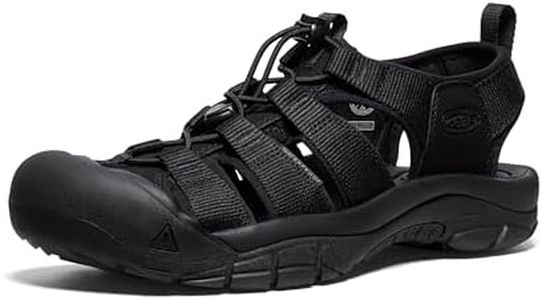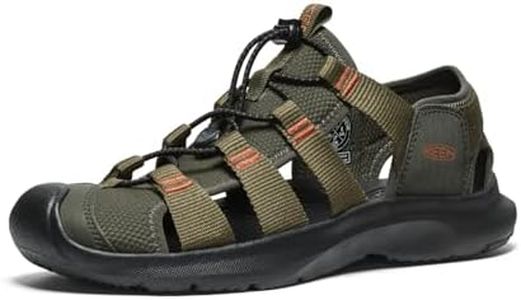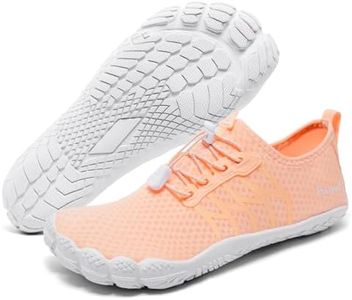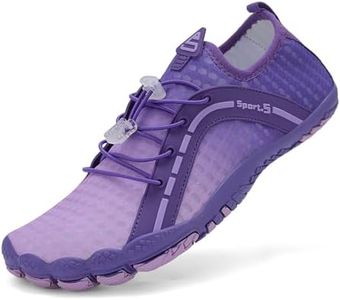We Use CookiesWe use cookies to enhance the security, performance,
functionality and for analytical and promotional activities. By continuing to browse this site you
are agreeing to our privacy policy
10 Best Water Shoes
From leading brands and best sellers available on the web.Buying Guide for the Best Water Shoes
Water shoes are a special type of footwear designed to provide comfort, protection, and grip in wet environments, whether you’re at the beach, kayaking, hiking through streams, or exploring rocky shores. Choosing the right pair comes down to understanding your activities and finding shoes that balance drainage, fit, protection, and grip to best suit your needs.MaterialMaterial in water shoes refers to the type of fabric or construction used for the upper and sometimes the sole of the shoe. This is important because materials determine how quickly the shoe dries, its breathability, and durability in different environments. Common materials include mesh, neoprene, and synthetic blends. Mesh is lightweight and dries quickly—suitable for water sports and hot climates. Neoprene has a more snug, wetsuit-like feel and gives warmth in cool water. Tougher synthetics offer more durability and protection. If you plan to spend lots of time mostly submerged, choose well-draining mesh. For colder water or longer treks, neoprene can help keep you warm. Think about where and how you’ll use your water shoes most often.
Sole Thickness and GripSole thickness and grip describe how both protective and slip-resistant the bottom of the shoe is. Thick, rugged soles protect your feet from sharp rocks or uneven terrain, making them suitable for river hiking or rocky coasts. Thinner soles are lighter and give you better ground feel, but offer less protection, making them better for sandy beaches or swimming pools. The grip or tread pattern ensures you don’t slip on wet surfaces; deeper lugs provide more traction on slippery rocks or trails. Choose thicker, grippier soles for more challenging terrain and thinner, flexible soles for lighter activities in calm water.
DrainageDrainage is how efficiently water exits the shoe after you step into water. Good drainage means your shoes won’t stay waterlogged and heavy. This is achieved with holes in the sole or mesh uppers that let water escape quickly. Look for shoes with obvious drainage features if you anticipate frequent or full submersion, like river walking or boat trips. For casual wading or beach use, moderate drainage may suffice. Consider your comfort—if you hate the feeling of squelchy, soaked shoes, prioritize fast-draining designs.
Fit and Closure SystemFit and closure system relates to how securely the shoes stay on your feet and how well they adjust to your foot shape. This is key to preventing blisters and keeping out debris. Water shoes use various systems—slip-on designs, elastic bands, adjustable straps, or bungee laces. Slip-on shoes are easiest to put on and are best for relaxed activities, while shoes with adjustable straps or laces offer a snugger, more customizable fit suitable for active movement or hiking. Consider your foot shape and the type of activity, and look for a design that feels secure without being too tight.
Toe ProtectionToe protection refers to whether the shoe design includes a reinforced area covering your toes, usually with rubber or a thicker material. This feature is important to avoid stubbing your toes on rocks, corals, or debris in the water. Some shoes have open toes for better ventilation and comfort on sandy beaches, while closed, reinforced toes are better for rocky rivers and rougher environments. If your water adventures involve more rugged terrain, opt for closed-toe designs; for casual beach strolls, open-toe styles may be more comfortable.
